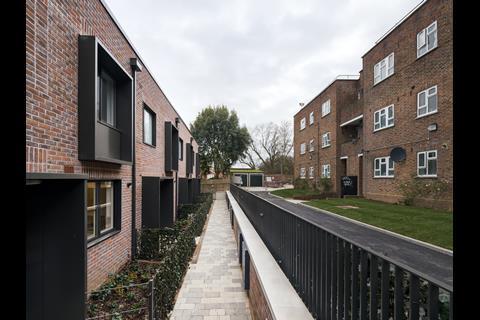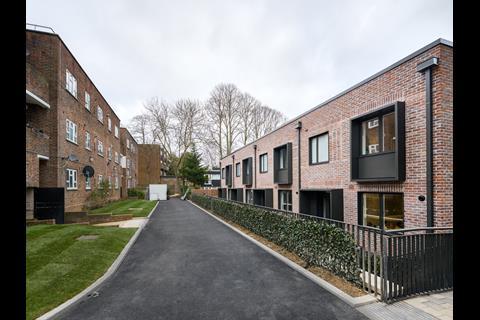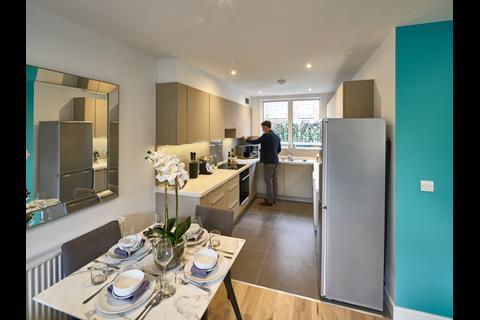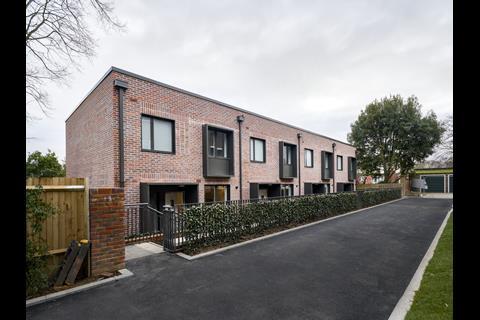The UKŌĆÖs housing crisis extends beyond just building more homes. Legacy asset management practices are failing to maximise the lifespan and value of existing housing stock. ThatŌĆÖs why at EDAROTH, as part of the ┤Ī│┘░ņŠ▒▓į▓§Ėķ├®▓╣▒¶Š▒▓§ group, we deliver affordable housing grounded in a data-driven, lifecycle-focused approach. Whatever the nature of the development opportunity, that long-term view is critical. To really address the housing crisis, our industry would benefit from following suit, writes Richard Weeks, programme director, EDAROTH
The UKŌĆÖs lack of housing rightly garners a huge amount of attention. But building homes is only one part of the housing problem. Another urgent question we must answer is - how well are we managing our existing housing stock, and are we building new homes to last?
Because it makes a huge difference whether houses last as long as they should, and stay safe, healthy spaces for the people who live in them. Yet for housing associations (HAs) and local authorities (LAs) across the UK, with millions of homes in their portfolios, thatŌĆÖs a difficult question to answer.

ItŌĆÖs a uniquely challenging time to own complex property portfolios. Fire safety challenges after the Grenfell tragedy mandated costly replacements of dangerous exterior cladding, while poorly performing homes are increasingly under the spotlight - in 2021, .
The ąį░╔Ąń╠© Safety Act, with secondary legislation now in place since the end of last year, mandates the auditability of every building, regardless of size or risk. And the upcoming Future Home standards will come into force next year, demanding improvements in energy performance and sustainability. Consequences of failing to meet these regulations will be severe.
The result is daunting, multi-dimensional pressure on HAs and LAs. Yet many face challenges just in ascertaining the full extent of what they own, compounded by a huge range of both type and age of properties. And even new homes are regularly handed over with inconsistent information, and worryingly, are sometimes prematurely reaching end of life. The result is a lack of control and accountability. So how can we regain it?
Our mission at EDAROTH is to deliver high quality, affordable homes ŌĆō using our innovative offsite manufactured housing product ŌĆō that support sustainable and inclusive communities.
But what stands out most about EDAROTH homes is that on day one, identifying and assessing land with our clients, we can tell them exactly what weŌĆÖre going to build, how itŌĆÖs going to perform with a high-level of certainty, and provide all the data behind it - a digital twin.
Down to the nuts and bolts, clients will have full visibility of assets, track changes over time, and be able to calibrate maintenance schedules accordingly. In sum, all the data needed to ensure that the home performs exactly as it should, for as long as it should.
Homes behaving badly
This is very far from the norm in our industry. One of the reasons for that is the steady growth of ŌĆśDesign and BuildŌĆÖ contracts over the last four decades, where clients have relinquished full control of project outcomes.
Not only has that led to situations where a building is simply different from what the client requested in the first place, but knowledge of deviations and alterations throughout the build is lost at handover - causing a lot of uncertainty as to how it will actually perform, and need to be maintained.
In tandem with that shift, our industryŌĆÖs culture has become reactive - waiting for things to go wrong, and then attempting to manage the deluge of calls and complaints that follow.
With little prior knowledge of the problems and systems they are investigating, maintenance engineers can rarely resolve an issue when they visit properties.
And with limited consistency of components across their portfolio, further visits - and delays - are invariably required while the correct parts are sourced. Along the way, every separate visit increases the chance of a tenant being out, which resets the clock, wastes time, and naturally leaves tenants more than a little frustrated.
Magnified to a portfolio-level scale, the result is a hugely demanding battle to stay on top of the stream of urgent maintenance priorities, which in turn triggers further maintenance costs.

The power of information
Picture an alternative reality for a moment: you have a water leak, and youŌĆÖre on the phone to your housing association. At the other end is an engineer whoŌĆÖs accessing the digital twin of your house, peering virtually with you into your utility cupboard.
He asks a series of simple questions, diagnoses the likely causes and dispatches someone the next day with the exact parts theyŌĆÖll need to fix any of those problems. The satisfied customerŌĆÖs heating is back on, the digital record is updated with the new installation (and inspection) date, and all with minimal fuss or friction.
ThatŌĆÖs just one example of what effective and efficient asset management should look like, and itŌĆÖs already possible. But itŌĆÖs also the foundation for a coherent asset management strategy - one that is proactive, data-driven, and predictable.
At EDAROTH weŌĆÖre focused on delivering homes that stand the test of time, and we understand that accurate, detailed information is the key element that our industry desperately needs to change its approach.
ThatŌĆÖs why weŌĆÖre also leveraging the excellence and expertise of our wider group - ┤Ī│┘░ņŠ▒▓į▓§Ėķ├®▓╣▒¶Š▒▓§ - to input best practice and strategic advice into the relationships weŌĆÖre also building in the industry. Connecting people, data, technology to truly transform outcomes.
Lifecycle thinking
Culture change across an industry wonŌĆÖt happen overnight. But we need to start getting the basics right, more often, and that starts with our relationships - which we can control. We canŌĆÖt rely on the supply chain to independently enact this change.
So that will mean narrowing down supply chains, carefully choosing organisations to work with that have the capability to drive positive change. In turn, thatŌĆÖll help our industry move away from maverick approaches to housebuilding, and restore professionalism, high standards and real collaboration - turning high-minded talk into impactful consequences.
Moreover, too often new housing isnŌĆÖt optimised for its full lifecycle. It makes commercial sense for market sales housebuilders to make short-term decisions based on capital cost, delivering a compliant product in the shortest possible time frame for the biggest profit. But it doesnŌĆÖt for those maintaining properties over the long-term.
So while it might be attractive to choose low cost, easy to replace materials, such as the ubiquitous white bathroom tiles commonly used in new social homes, investing in higher quality materials that extend the operational life of the asset is demonstrably more economical in the long term.
Yet our industry too often looks only at the capital cost right now, without appraising the long-term value of assets that are easier and cheaper to maintain and operate. The result is a cycle of breakages, deterioration and repairs that end up costing more.
Think big, start small
For EDAROTH, the long-term view is paramount. Because if we set things up right at the outset, weŌĆÖll avoid all the perils and pitfalls of prematurely degrading property that we see all too often.
Supported by digital twins and greater transparency, we can restore confidence to managing large portfolios, free up more money for things itŌĆÖs desperately needed for, and finally break the cycle of reactive, inefficient housing management that has plagued our sector for years.
ItŌĆÖs an ambitious vision, but itŌĆÖs eminently feasible and achievable if we synchronise innovations like digital twinning with a renewed focus on getting the basics right.
ThatŌĆÖs the reality weŌĆÖre working towards at EDAROTH - tackling the housing crisis from both ends. Because you canŌĆÖt deliver place-led growth if the buildings and communities are crumbling. And it all starts before weŌĆÖve even broken ground.





























